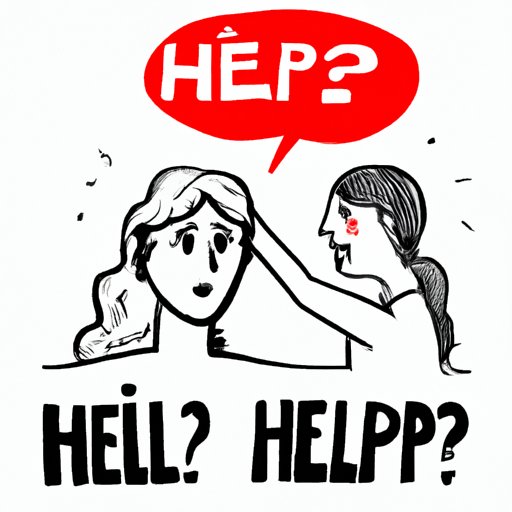
Introduction
Are you planning to travel to a Spanish-speaking country or communicate with Spanish-speaking individuals? One of the most important things to learn is how to ask for help. Effective communication is essential for any interaction, whether it be for ordering food, asking for directions, or seeking medical assistance. In this article, we will guide you through the basics of asking for help in Spanish.
How to Say “Can You Help Me” in Spanish: A Beginner’s Guide
Learning a new language can be daunting, but starting with basic phrases is always a good idea. When it comes to asking for help in Spanish, there are a few simple phrases that are commonly used:
- ¿Me puedes ayudar? – Can you help me?
- ¿Puedes ayudarme, por favor? – Can you please help me?
- Necesito ayuda – I need help
Remember to pay attention to pronunciation and intonation when speaking Spanish. Try to practice these phrases with a Spanish speaker or use language-learning apps that help with pronunciation.
Bridging the Language Gap: Asking for Help in Spanish
When asking for help in Spanish, it is essential to consider cultural differences and non-verbal communication. In some cultures, direct requests for help may be considered rude, while in others, it is expected. To avoid misunderstandings, it is crucial to understand the cultural nuances of the Spanish-speaking community you are engaging with. Additionally, non-verbal cues such as body language and facial expressions can help convey urgency or gratitude when asking for help.
It is also important to be aware of common misunderstandings that can arise when communicating with Spanish speakers. For example, the use of the word “sí” (yes) can sometimes mean “I understand” instead of “I agree.” Understanding these nuances can make communication much smoother.
The Art of Requesting Assistance in Spanish: Tips and Phrases for Effective Communication
When asking for help in Spanish, expressing the urgency and degree of need is crucial. Whether you need someone to call an ambulance or help with directions, you need to be clear about the situation. Additionally, being polite and using the appropriate level of formality can make all the difference in how your request is received.
Here are some common phrases and expressions for different situations:
- Por favor, ¿me puede mostrar cómo llegar a la calle X? – Could you please show me how to get to X street?
- ¿Podría llamarme a un taxi, por favor? – Could you call me a taxi, please?
- ¡Ayuda! ¡Llama a una ambulancia, por favor!- Help! Call an ambulance, please!
- Disculpe, ¿puede ayudarme a encontrar mi hotel? – Excuse me, could you help me find my hotel?
¡Ayuda! Understanding the Different Ways to Ask for Help in Spanish
As with any language, there are often several words and expressions for the same concept. While “ayuda” is the most common word for help, there are other options that you may encounter:
- Socorro – Help!
- Asistencia – Assistance
- Auxilio – Aid
Knowing which word or expression to use in which situation can help you communicate more effectively.
Asking for a Hand in Spanish: Common Expressions to Use When You Need Assistance
The specific language and phrases you use when asking for help in Spanish can vary depending on the context. Here are some examples of phrases for seeking help in different situations:
- At work: ¿Tiene unos minutos para ayudarme con este proyecto? – Do you have a few minutes to help me with this project?
- While traveling: ¿Me puede ayudar a encontrar una buena panadería? – Can you help me find a good bakery?
- In an emergency: Por favor, llame a la policía/los bomberos – Please call the police/firefighters
Conclusion
In conclusion, asking for help in Spanish is an essential communication skill for any Spanish learner. By practicing the basic phrases, understanding cultural differences, and using appropriate non-verbal cues, you can improve your ability to effectively communicate in Spanish. Remember to use context-appropriate formality, and don’t be afraid to ask for help when you need it.




